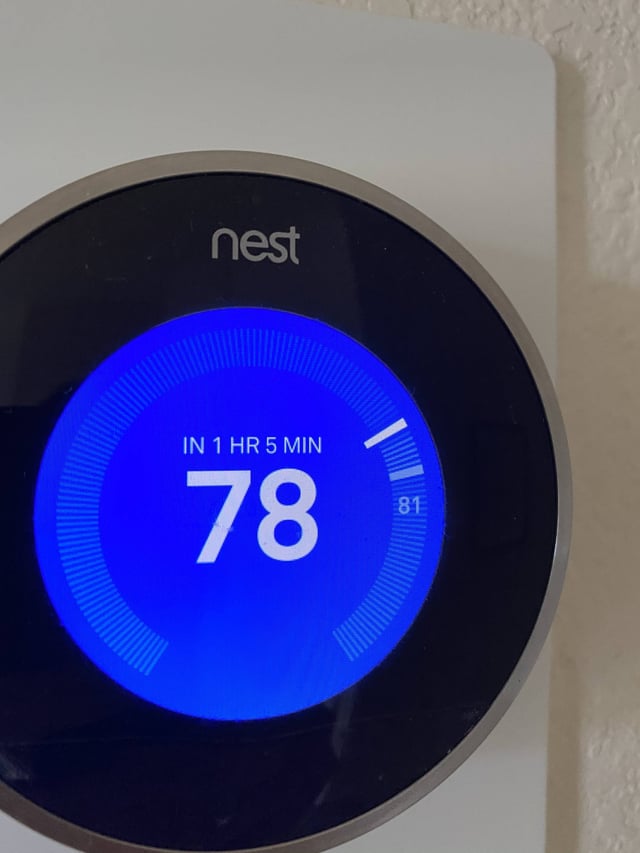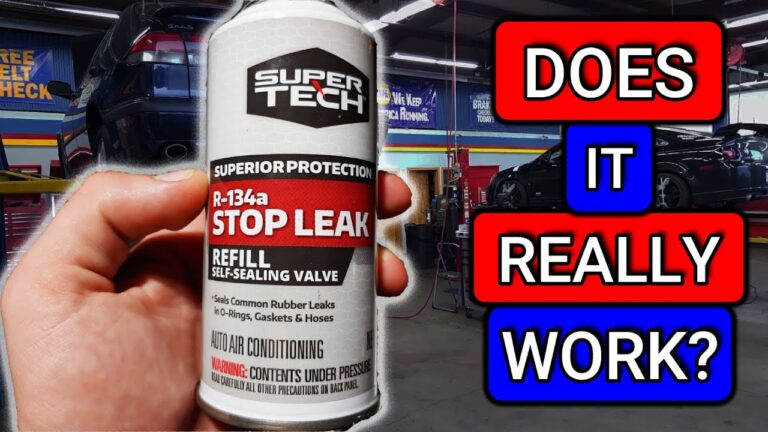How Long Should My AC Take To Cool 1 Degree: Expert Insights
An AC should take about 15-20 minutes to cool 1 degree, depending on various factors. These factors include room size, insulation, and unit efficiency.
Cooling your home efficiently requires understanding how your air conditioner operates. The time it takes for an AC to cool 1 degree can vary. Key elements like the size of the room, the quality of insulation, and the efficiency of your air conditioning unit play significant roles.
Regular maintenance and proper usage can optimize performance. Ensuring your AC unit is appropriately sized for your space is crucial. An efficient system not only cools faster but also conserves energy, reducing utility bills. Understanding these aspects can help maintain a comfortable and energy-efficient home environment.
Factors Affecting Cooling Time
Cooling a home efficiently requires understanding various factors. Knowing these factors helps optimize your air conditioner’s performance and energy use. Let’s explore the key elements that affect cooling time.
Thermostat Settings
Your thermostat settings play a significant role in cooling efficiency. Setting the thermostat too low can overwork your AC unit. This might slow down cooling and increase energy costs. A moderate setting ensures faster cooling and energy savings.
Smart thermostats offer better control over your home’s temperature. They can be programmed to suit your needs, reducing unnecessary cooling. This technology helps in maintaining a comfortable environment efficiently.
Insulation Quality
Insulation quality directly impacts how quickly your home cools. Poor insulation allows heat to enter, slowing down the cooling process. Quality insulation keeps cool air inside and hot air outside.
Check windows and doors for any gaps. Seal these gaps to improve insulation. Proper insulation reduces the load on your AC unit, making it more effective.
Here’s a quick comparison of different insulation materials:
| Material | Insulation Efficiency |
|---|---|
| Fiberglass | High |
| Foam Board | Very High |
| Spray Foam | Excellent |
Proper insulation ensures a comfortable home and reduces energy bills.

Credit: www.reddit.com
Ac Unit Size And Capacity
Understanding your AC unit size and capacity is crucial for efficient cooling. The right size ensures your AC cools your home effectively. This section covers BTU ratings and room size considerations. Both are key to determining how long your AC takes to cool 1 degree.
Btu Ratings
BTU stands for British Thermal Unit. It measures your AC’s cooling capacity. A higher BTU rating means more cooling power. But, more BTUs are not always better. Oversized units can cycle on and off too quickly. This reduces efficiency and increases wear.
Here is a simple table to understand BTU ratings:
| Room Size (sq ft) | BTU Rating |
|---|---|
| 100-150 | 5,000 |
| 150-250 | 6,000 |
| 250-300 | 7,000 |
| 300-350 | 8,000 |
| 350-400 | 9,000 |
| 400-450 | 10,000 |
Room Size Considerations
Room size directly impacts how long your AC takes to cool. A larger room needs more time to cool. It’s important to match the AC unit to your room size.
- Measure your room’s square footage.
- Use the BTU table above to find the right unit size.
- Avoid oversizing or undersizing the unit.
Factors like ceiling height and insulation also affect cooling time. Rooms with high ceilings may need a higher BTU rating. Poorly insulated rooms might take longer to cool.
Proper sizing ensures your AC works efficiently. It will cool your room faster and use less energy.
Impact Of Outdoor Temperature
Understanding the impact of outdoor temperature on your AC’s performance is crucial. The time it takes to cool your home by 1 degree can vary. This depends largely on the weather outside.
Seasonal Variations
The time your AC takes to cool can change with the seasons. During spring and autumn, the temperatures are milder. Your AC will have an easier time cooling your home. It may take only a few minutes to drop by 1 degree.
During the summer, the story changes. The hotter it gets outside, the harder your AC has to work. This can significantly increase the time needed to cool your home. On very hot days, it could take 10 to 20 minutes to cool by 1 degree.
Heatwaves
Heatwaves present another challenge for your AC. During a heatwave, temperatures can soar to extreme levels. This puts extra strain on your cooling system. Your AC might struggle to cool even 1 degree quickly.
Table 1 below shows the estimated cooling times during various heatwave conditions:
| Outdoor Temperature | Estimated Cooling Time (1 Degree) |
|---|---|
| 85°F (29°C) | 5-10 minutes |
| 95°F (35°C) | 10-15 minutes |
| 105°F (40°C) | 15-20 minutes |
During a heatwave, consider using ceiling fans. They can help your AC by circulating cool air. Also, keep windows and doors closed. This prevents cool air from escaping.

Credit: www.facebook.com
Airflow And Ventilation
Efficient airflow and proper ventilation are crucial for cooling your home. An AC needs to circulate air effectively to cool down a degree. This process involves several key components such as ductwork efficiency and vent placement.
Ductwork Efficiency
Ductwork plays a vital role in your AC’s performance. Leaky or blocked ducts can slow down the cooling process. Make sure your ducts are sealed and clean. Dirty ducts restrict airflow, making your AC work harder. Inspect your ductwork regularly to maintain efficiency.
| Problem | Solution |
|---|---|
| Leaky Ducts | Seal gaps with duct tape |
| Dirty Ducts | Clean ducts regularly |
Vent Placement
Vent placement is another critical factor. Vents should be unobstructed to allow free airflow. Blocked vents can cause uneven cooling. Place vents in strategic locations to distribute air evenly. Avoid placing vents behind furniture or curtains.
- Ensure vents are open
- Check for obstructions
- Place vents away from large furniture
Proper airflow and ventilation enhance your AC’s efficiency. This helps in cooling your home faster. Regular maintenance is key to optimal performance.
Maintenance And Upkeep
Maintaining your AC ensures it cools efficiently. This affects how long it takes to cool 1 degree. Regular maintenance can prevent issues and extend the unit’s life. Below are essential maintenance steps.
Filter Replacements
Replacing the air filter is crucial. A dirty filter blocks airflow and strains the AC. This makes it take longer to cool your home. Replace the filter every 1-3 months. Check the filter more often during heavy use.
- Improves air quality
- Enhances cooling efficiency
- Reduces energy costs
Use the filter type recommended by your AC manufacturer. This ensures optimal performance.
Regular Servicing
Regular AC servicing is essential for efficiency. Schedule a professional check-up at least once a year. This includes cleaning coils, checking refrigerant levels, and inspecting all parts.
- Prevents unexpected breakdowns
- Maintains cooling efficiency
- Extends unit lifespan
During servicing, technicians can spot and fix minor issues before they become major problems. This keeps your AC running smoothly and reduces cooling time.
| Maintenance Task | Frequency |
|---|---|
| Filter Replacement | 1-3 months |
| Professional Servicing | Annually |
Keeping up with maintenance ensures your AC cools efficiently and quickly. Follow these tips to keep your home comfortable.
Energy Efficiency
Understanding energy efficiency can help you save on cooling costs. An efficient AC cools faster and uses less power. This section explains how to improve your AC’s efficiency.
Seer Ratings
The Seasonal Energy Efficiency Ratio (SEER) measures your AC’s efficiency. Higher SEER ratings mean better performance. Look for AC units with a SEER rating of 14 or above.
| SEER Rating | Efficiency Level |
|---|---|
| 14-16 | Good |
| 17-20 | Better |
| 21+ | Best |
Energy-saving Tips
Follow these tips to improve your AC’s efficiency:
- Regular Maintenance: Clean filters and check for leaks.
- Proper Insulation: Insulate your home to keep cool air inside.
- Smart Thermostat: Use a programmable thermostat to manage temperatures.
- Shade: Close curtains and blinds to block sunlight.
These energy-saving tips will help your AC cool 1 degree faster. They also reduce your electricity bill.
Smart Thermostats
Smart thermostats have revolutionized how we control home temperatures. They offer convenience, efficiency, and energy savings. With advanced features, they make cooling your home more efficient. Let’s dive into two key features: programmable settings and remote control features.
Programmable Settings
Smart thermostats allow users to set custom cooling schedules. You can program the thermostat to cool your home at specific times. This feature helps in saving energy and reducing costs.
For example, you can set the AC to cool your home before you wake up. You can also program it to reduce cooling when you are not at home. Below is a sample table of a typical daily schedule:
| Time | Temperature (°F) |
|---|---|
| 6:00 AM – 8:00 AM | 72 |
| 8:00 AM – 6:00 PM | 78 |
| 6:00 PM – 10:00 PM | 70 |
| 10:00 PM – 6:00 AM | 74 |
Remote Control Features
Smart thermostats offer remote control options through smartphone apps. You can adjust the temperature from anywhere using your phone. This feature adds convenience and ensures optimal comfort.
Here are some benefits of remote control features:
- Adjust settings on the go
- Receive energy usage reports
- Monitor system performance
- Get maintenance alerts
This feature is especially useful if you forget to adjust the thermostat before leaving home.
Expert Tips For Faster Cooling
Are you wondering how long it should take your AC to cool 1 degree? Here are some expert tips to make your AC cool faster. Follow these steps to stay cool and comfortable.
Optimal Temperature Settings
Setting the correct temperature can make a big difference. Aim for a temperature that balances comfort and efficiency. According to experts, the ideal temperature is between 72-78 degrees Fahrenheit.
| Temperature | Energy Efficiency |
|---|---|
| 72°F | Moderate |
| 75°F | High |
| 78°F | Highest |
Keeping your AC at 75°F is efficient. This temperature setting also ensures comfort. Avoid setting the thermostat too low. It won’t cool your home faster and wastes energy.
Using Fans
Fans can help distribute cool air. They work well with your AC. Use ceiling fans to circulate air. Place portable fans near vents for better airflow.
- Ceiling Fans: Set them to rotate counterclockwise.
- Portable Fans: Position them near AC vents.
- Box Fans: Place in windows to draw in cool air.
Fans make your room feel cooler. They also reduce the workload on your AC. This helps your AC cool 1 degree faster.

Credit: www.amazon.com
Frequently Asked Questions
How Long Should Ac Take To Drop 1 Degree?
An AC typically takes 15-20 minutes to drop 1 degree. Factors like room size and insulation can affect this time.
How Long Does It Take To Cool A House From 80 To 72?
Cooling a house from 80 to 72 degrees typically takes 2 to 3 hours. Factors like insulation and AC efficiency can affect the time. Regular maintenance ensures optimal performance.
Is It Normal For Ac To Take Long To Cool?
Yes, it’s normal for an AC to take some time to cool. Check for maintenance issues if it takes too long.
Conclusion
Understanding how long your AC takes to cool 1 degree helps in maintaining efficiency. Regular maintenance is key. By ensuring your AC functions optimally, you can enjoy a comfortable home. Keep an eye on performance and consult professionals if needed.
Proper care guarantees your AC works effectively and efficiently.





